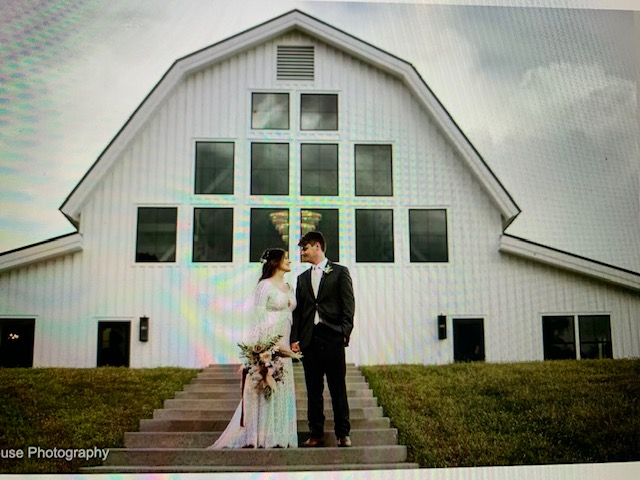
With wedding season upon us, here’s an interesting look at what each of these common traditions means, from the wedding reception experts at Jacquie’s Gourmet Catering:
 Exchanging wedding rings
Exchanging wedding ringsThe wedding ring has ties to ancient Rome where a ring placed upon a woman’s finger meant ownership by her husband.
In your left hand, there’s an artery that runs straight to the heart, an enduring sign of love.
Diamond wedding rings were not popular until 1477, when Prince Maximillian gave his betrothed, Mary of Burgundy, a large diamond engagement ring.
 White wedding dresses
White wedding dressesQueen Victoria of England was the first royal influencer to wear a white wedding dress, when in 1840, she shocked English society by wearing a white lace gown.
A white wedding dress is still the tradition in most American weddings, but wedding attire does vary among cultures.
This dates back to arranged marriages, when daughters were considered a commodity to their family, and marriage was a way of sealing agreements between families. A bride and groom often met for the first time at the altar. The veil was used to obscure the bride’s features, only being lifted after the marriage ceremony was completed. This was to keep the groom from backing out from the deal if he didn’t like what he saw.
In America, it’s traditional for the father to walk his daughter down the aisle and “give her away.” Jewish tradition allows both parents to walk the bride and the groom down the aisle, which many couples are adopting today.
In the past, a bride’s attendants dressed similar to the bride to confuse and distract evil spirits trying to spoil the bride’s happiness.
The “best” in best man once referred to the quality of a man’s swordsmanship. When weddings were used as a business transaction rather than a union of love, the groom needed a good swordsman to help either retrieve a run-away bride or fend off a bride’s angry family that may not approve of the union.
Flowers in a wedding go back to Greek and Roman times, where they symbolized virginity. Flowers still play a significant role in weddings today. Most members of a wedding party carry or wear flowers.
The earliest confections held at a wedding in Roman times were similar to biscuits and scones. The bride and groom would share a few crumbs together as there first act as a married couple.
The top layer of the wedding cake was traditionally saved by the Bride and Groom to be used at their future child’s christening, as it was expected that the bride would be with child within the first year.
In old Medieval England and France, guests would try to obtain a piece of the bride’s dress for good luck, sometimes ripping to shreds. To pacify the crowd and ease the bride’s mind, the groom began tossing out a piece of the bride’s wedding attire to distract the guests as the newlyweds made a quick escape from the reception.
Tossing rice at the end of the ceremony is meant to symbolize rain, which is said to be a sign of prosperity, fertility and good fortune. While grain presents no imminent danger to birds, it is more common to see different items in the sendoff such as confetti, bubbles or sparklers.
This custom of carrying a bride over the threshold of their new home came from Medieval Europe with the belief that the bride was vulnerable to evil spirits through her feet. To prevent evil spirits from entering the house which may be lingering at the threshold, the groom would carry her into their new home.
Traditions are fun to know – and improve upon. These days, it doesn’t matter what you choose to do at your wedding. Do what appeals to you – and have fun!
And be sure to talk to Jacquie’s Gourmet Catering wedding planners about setting up stations and themes that you want to include. We love to have fun – and make your wedding special -- too.